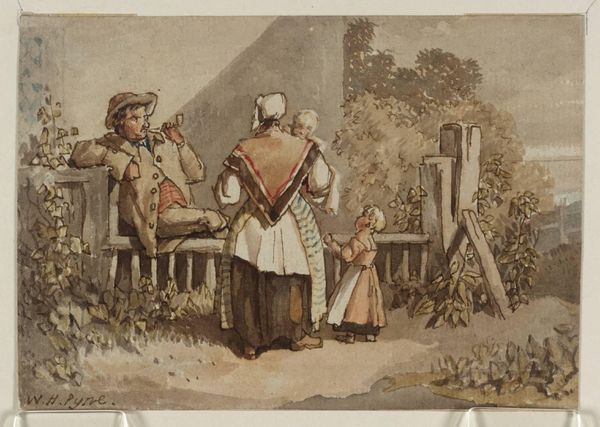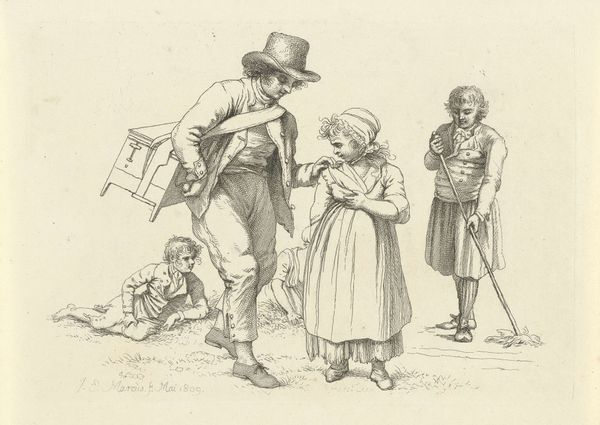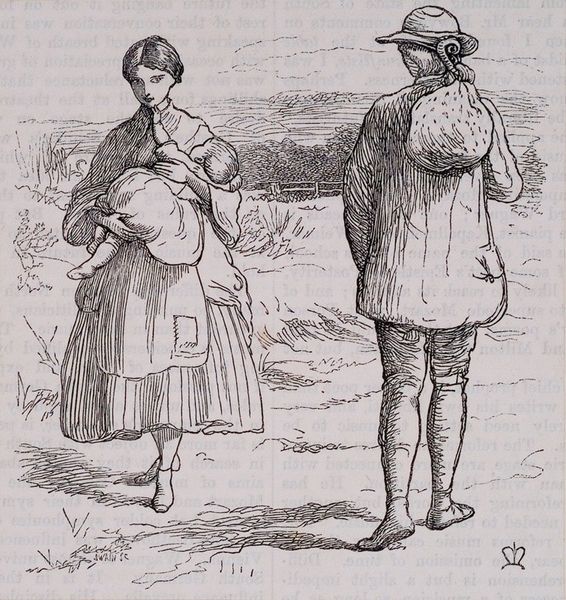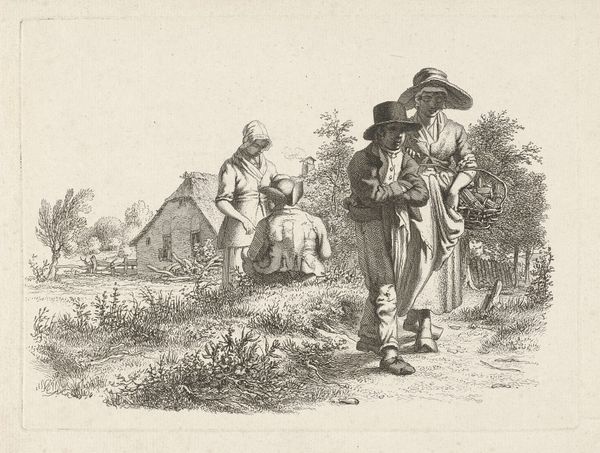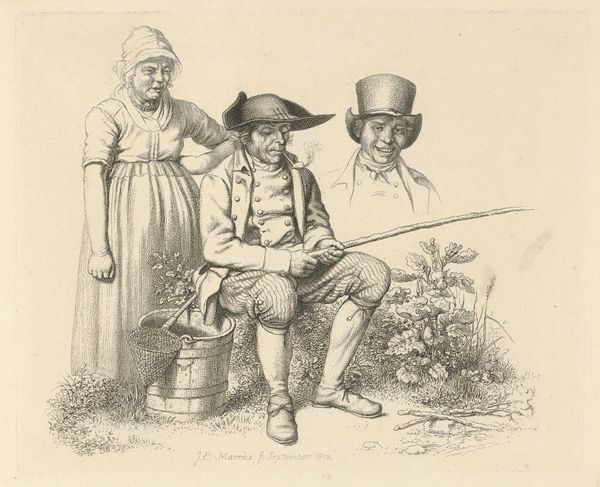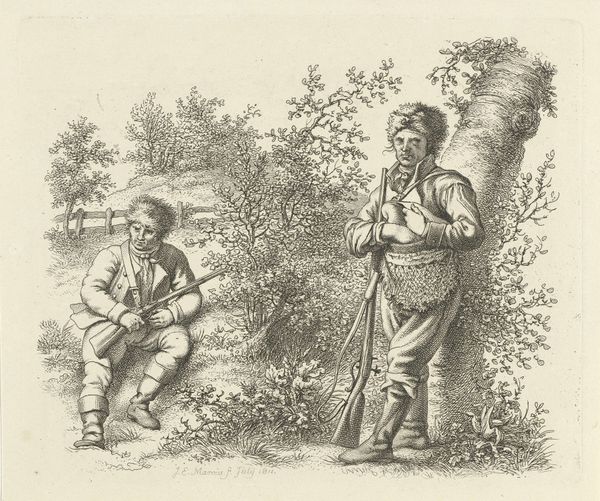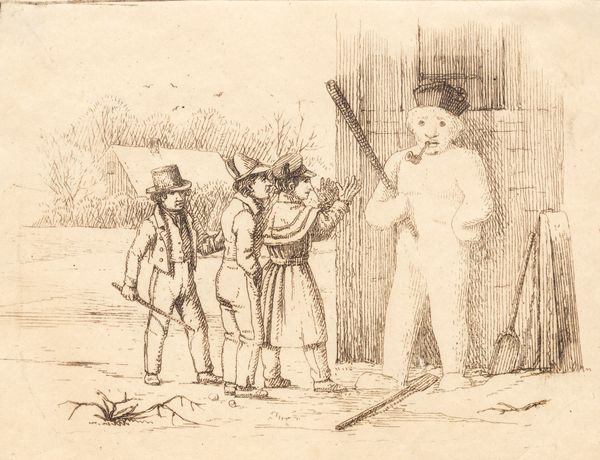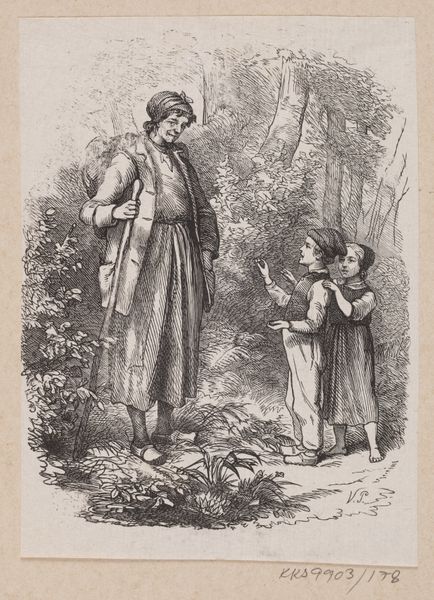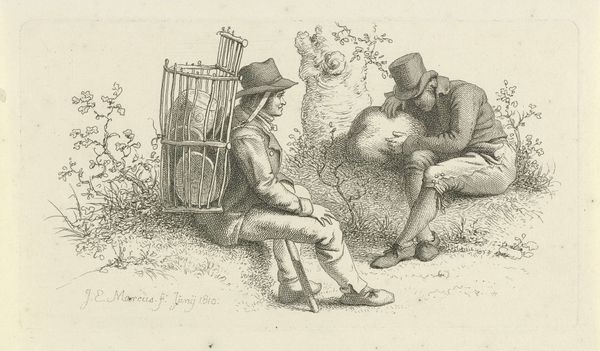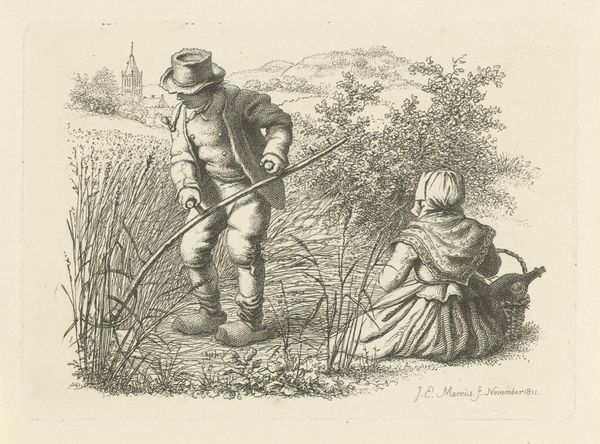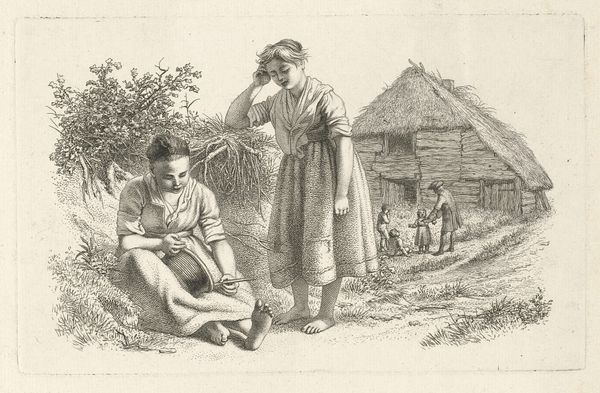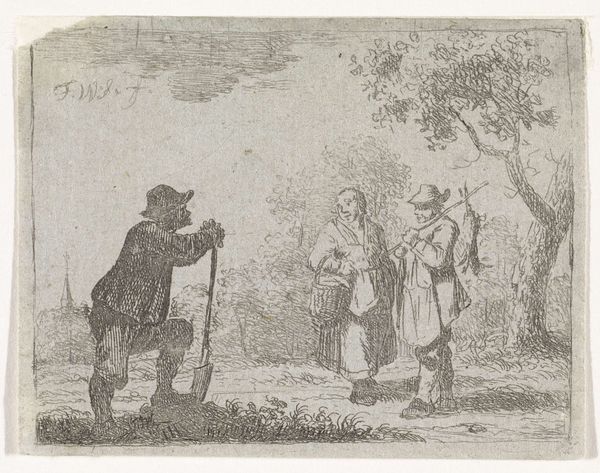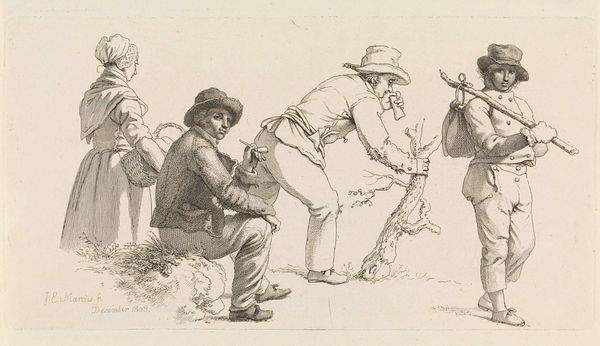
drawing, pen
#
drawing
#
pen sketch
#
landscape
#
figuration
#
romanticism
#
pen
#
genre-painting
Dimensions: height 123 mm, width 197 mm
Copyright: Rijks Museum: Open Domain
Curator: Looking at this pen drawing, “Maaier in gesprek met een meisje,” or “Mower Conversing with a Girl,” crafted between 1812 and 1815 by Jacob Ernst Marcus, currently residing here at the Rijksmuseum...it gives off an oddly calm mood. Editor: Calm? I feel an undercurrent of tension. Perhaps it's the rigidity of the lines, the stark contrast in their postures, that create a certain…unspoken dynamic. And a focus on rurality as a whole. I wonder about the access to the materiality needed to create this kind of labor, the land required to sustain the activity, all made from relatively rudimentary things? Curator: That tension…perhaps you’re onto something. There’s a simplicity in their world, captured by this almost naive use of line. A girl is resting at the fence while a farm worker leans on the fence post carrying tools – the potential for labour feels immediate but the conversation offers respite. Maybe a reflection of the Romantic era's fascination with nature's innocence contrasted against labor itself? Editor: Romanticism definitely sought to ennoble work and the common person but from my view, this piece touches more on what makes that work actually happen in a socioeconomic sphere – not as the concept of honest, simple labor. Like that ladder by the structure, maybe he is heading home for the day. How easily can he pick this labor up again tomorrow, the materials for which need maintaining and maybe sharpening? Curator: I see it as Marcus using the scene as a subtle stage where social harmony might play out; he frames that with nature through both character’s placement to add drama, like a novel unfolding. But it isn't quite celebratory of social circumstances as he hints the viewer toward romantic tension with how this encounter will impact what comes next, from both sides of this gate, for this viewer at the Rijksmuseum. Editor: Social harmony comes from material equity; that drawing tool that he would have acquired comes from that starting base. Seeing what you suggest has now revealed the drawing for a landscape piece from the genre painting. He uses the material circumstances of labour in society from his own high placement to deliver social commentary on life, death and relationships. Thank you. Curator: Thank you. What once felt simple is actually now laced with intent.
Comments
No comments
Be the first to comment and join the conversation on the ultimate creative platform.
